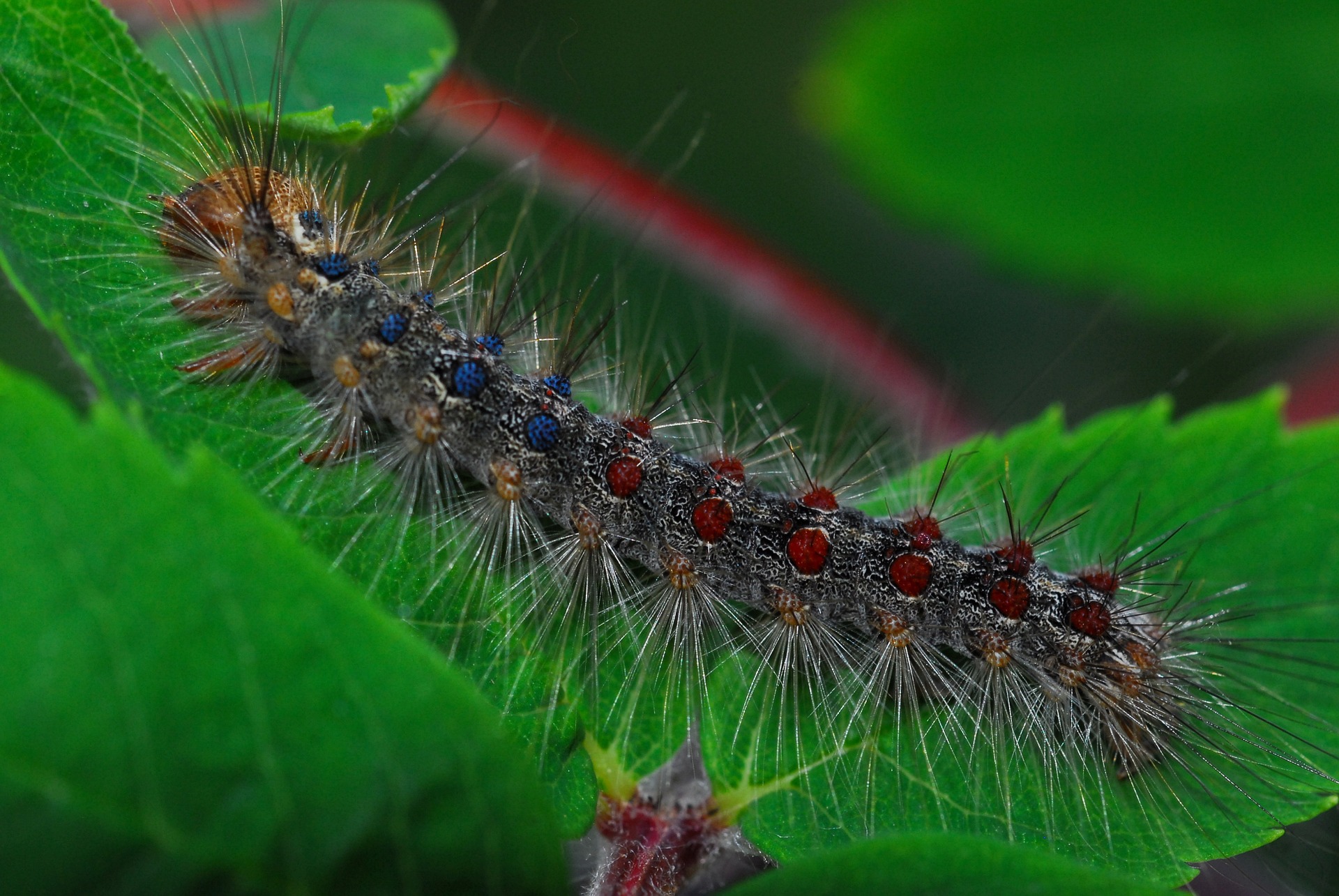In 1869 French artist, astronomer, and amateur entomologist, Etienne Leopold Trouvelot, traveled to Massachusetts with a batch of gypsy moth eggs to raise the larvae in his backyard. His reasoning remains murky to this day, but the lasting impact of his project persists since some of the moths escaped into the wild.
Despite Trouvelot’s attempts to alert local entomologists to this looming ecological catastrophe, no action was taken. The moths continued to roam and reproduce freely, and by 1889 the Massachusetts State Board of Agriculture launched a massive effort to eradicate the gypsy moth problem to no avail.
The main issue with gypsy moths is that when they are in caterpillar form, they can have a devastating effect on oak tree populations, their favorite food source. Boundless populations of gypsy moths can cause widespread defoliation of oaks.
A century later, in 1989, there was another major gypsy moth outbreak. During the 1989 outbreak, scientists discovered that the Entomophaga maimaiga fungus kills gypsy moth caterpillars. Since this groundbreaking discovery was made, the fungus has been one of the most important factors suppressing gypsy moth activity.
Since that important discovery, things have been relatively calm – until the last couple years.
That’s because another environmental factor – drought – can impede the fungus from reproducing. Without the ability to reproduce, the fungus cannot infect gypsy moth caterpillar populations effectively. A likely indirect cause of the most recent outbreak was the dry conditions in spring 2015 and 2016.
But something else unusual happened this time. In previous outbreaks, some weaker trees died, but most trees were able to produce a second crop of leaves and tree populations didn’t suffer tremendous losses. In 2017 and 2018, though, gypsy moths caused widespread defoliation and many trees didn’t produce new leaves and even many stronger trees perished.
University of Connecticut assistant professor Robert Fahey of the Department of Natural Resources and the Environment and the Center for Environmental Sciences and Engineering wants to know what’s behind this difference. Fahey has received $57,849 from the National Science Foundation to investigate how the intense drought that preceded this gypsy mouth outbreak could have been associated with tree mortality patterns. Assistant research professor Chandi Witharana in the Department of Natural Resources and the Environment is the Co-PI on this grant.
“Usually some weaker trees are killed, but this time there has been very widespread mortality and we believe that this may be related to the trees being stressed by the drought right as (or before) the defoliation happened,” Fahey says. “This is a good example of a disturbance interaction, which is a growing topic in ecology because of changes to disturbance regimes related to global climate change and invasive pest introductions.”
This project will investigate the extent to which the timing of these events affects their impact. The researchers will evaluate whether areas which experienced the greatest levels of tree mortality are those which also experienced the most severe initial drought impacts. They will also assess whether these areas experienced defoliation closer to the time of the drought than other areas.
Fahey, Witharana, and collaborators James Hurd, research associate in the Department of Natural Resources and the Environment, and Tom Worthley, UConn Extension Forester and associate extension educator, are working closely with the regional forest management community on this project. They will share the results of this study with this community in order to help practitioners make more informed decisions for managing the forests impacted by these invasions and removing trees that were killed by the most recent infestation.
The research team expects that the study results will be incredibly valuable to stakeholders in understanding the underlying causes of tree mortality. The findings could even potentially be used to predict future impacts of these kind of compounded events.
This project is an NSF RAPID Grant. These grants are awarded for projects which have a severe urgency and will provide quick-response research on natural or anthropogenic disasters. This project is NSF No.: 1917705.
Robert Fahey received his Ph.D. in forestry from the University of Wisconsin-Madison in 2011. He spent four years working at the Morton Arboretum as a research scientist and continues to serve as a research fellow in the Center for Tree Science. He has been working at UConn since 2016. His research interests include ecological silviculture, urban forest modeling, and forest structural complexity.
Chandi Witharana holds a Ph.D. in remote sensing from UConn. He has been working at UConn since 2016. His research has a global scope and focuses on using the methodological developments to unseal faster, deeper, and more accurate analyses of large volumes of high-resolution remote sensing data including object-based image analysis, point cloud analytics, machine learning, and unmanned aerial systems.



